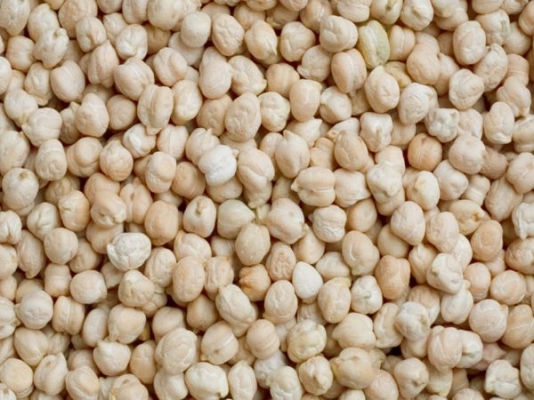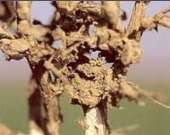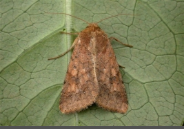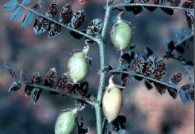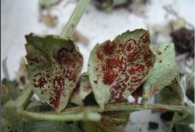Gujarat Chana 4: It is suitable for irrigated and rainfed areas of eastern UP. Crop is ready to harvest in 120-130 days. Gives average yield of 8-10 Quintal/acre.
Avarodhi: It is suitable for cultivation in whole Uttar Pradesh. Ready to harvest in 145-150 days. Gives average yield of 10-12 Quintal/acre.
Pusa 256: It is suitable for cultivation in whole Uttar Pradesh. Ready to harvest in 135-140 days. Gives average yield of 10-12 Quintal/acre.
KWR 108: Suitable for cultivation in whole Uttar Pradesh. Ready to harvest in 130-135 days. Gives average yield of 10-12 Quintal/acre.
Radhe: It is suitable for cultivation in Bundelkhand region. Ready to harvest in 145-150 days. Gives average yield of 10-12 Quintal/acre.
J.G 16: It is suitable for cultivation in Bundelkhand region. Ready to harvest in 135-140 days. Gives average yield of 8-9 Quintal/acre.
K-850: Suitable for Plains of UP. Ready to harvest in 145-150 days. Gives average yield of 10-12 Quintal/acre.
DCP 92-3: It is suitable for cultivation in whole Uttar Pradesh. Ready to harvest in 145-150 days. Gives average yield of 10-12 Quintal/acre.
Aadhar: It is suitable for western UP. Ready to harvest in 125-130 days. Gives average yield 7-8 Quintal/acre.
WCG 1: It is suitable for western UP. Ready to harvest in 135-140 days. Gives average yield of 10-12 Quintal/acre.
WCG 2: It is suitable for western UP. Ready to harvest in 130-135 days. Gives average yield of 8-10 Quintal/acre.
KGD: 1168: It is suitable for whole UP. Ready to harvest in 150-155 days. Gives average yield of 10-12 Quintal/acre.
Pusa 372: It is suitable for late sowing. It is suitable for whole UP. Ready to harvest in 130-140 days. Gives average yield of 10-12 Quintal/acre.
Uday: It is suitable for late sowing and suitable for whole UP. Ready to harvest in 130-140 days. Gives average yield of 8-10 Quintal/acre.
Pant G 186: It is suitable for late sowing and suitable for whole UP. Ready to harvest in 120-130 days. Gives average yield of 8-10 Quintal/acre.
KABULI Varieties
Pusa 1003: It is suitable for eastern UP. Ready to harvest in 135-145 days. Gives average yield of 8-9 Quintal/acre.
HK 94-134: It is suitable for whole UP. Ready to harvest in 140-145 days. Gives average yield of 10-12 Quintal/acre.
Shubra: It is suitable for Bundelkhand. Ready to harvest in 110-115 days. Gives average yield of 5-6 Quintal/acre.
Other state varieties:
RSG-44: Released in 1991 by RAU, Durgapur. Gives an average yield of 8-10 Quintal/acre. It takes 135-185 days to reach maturity. The variety is drought and frost resistant.
KPG-59: Released in 1992 by CASUAT. It is a late sown variety having bold seeds. Gives an average yield of 8 Quintal/acre. It takes 135-150days to reach maturity. The variety is tolerant to root rot, wilt stunt and pod borer.
Pusa 372 (BG 372): Released by IARI in 1993. Gives an average yield of 5-6 Quintal/acre. It takes days 135-150 days to reach maturity. The variety is tolerant to blight, wilt and root rot. It has small seeds which are light brown in color.
Pusa 329: Released by IARI in 1993. Gives an average yield of 8-9 Quintal/acre. It takes days 145-155 days to reach maturity. It is moderately resistant to wilt and Botrytis grey mould.
Vardan (GNG-663): Released by RAU, Srinagar. Gives an average yield of 9-10 Quintal/acre. It takes 150-155 days to reach maturity. The variety is resistant to wilt.
GPF 2: Released by PAU in 1995. Gives an average yield of 8-9 Quintal/acre. It takes 152 days to reach maturity. The variety is resistant to wilt and tolerant to Ascochyta blight. They have yellowish brown color seeds.
Pusa-362: Released by IARI in 1995. Gives an average yield of 9-10 Quintal/acre. It takes 145-150 days to reach maturity. It has bold seeds and the variety is tolerant to wilt.
Alok (KGD 1168): Released by CSAUAT in 1996. Gives an average yield of 7-8 Quintal/acre. It takes 145-150 days to reach maturity. Resistant to wilt and root rot.
Samrat (GNG 469): Released by RAU, Srinagar in 1997. Gives an average yield of 7-8 Quintal/acre. It takes 145-150 days to reach maturity. Resistant to Ascochyta blight and tolerant to wilt and root rot. It is suitable to grow in rainfed and irrigated areas.
Karnal Chana-1: Suitable for North Rajasthan. Released by CSSRI, Karnal in 1997. Gives an average yield of 9-11 Quintal/acre. It takes 140-147 days to reach maturity. The variety is resistant to wilt.
DCP-92-3: Released by IIPR in 1997. Gives an average yield of 7-8 Quintal/acre. It takes 145-150 days to reach maturity. It has medium bold seeds which are yellowish brown in color. Suitable to grow in north Rajasthan where the land has high fertility and have excessive moisture.
Asha (RSG 945): Released by ARS, Durgapura in 2005. Gives an average yield of 7 Quintal/acre. It takes 75-80 days to reach maturity. The variety is moderately resistant to dry root and wilt.
PGC-1 (Pratap Channa 1): Released by ARS, Banswara in 2005. Gives an average yield of 5-6Quintal/acre. It takes 90-95 days to reach maturity. The variety is moderately resistant to wilt and pod borer.
Rajas: Released by MPKV IN 2007. Gives an average yield of 7.5 Quintal/acre. It takes 136 days to reach maturity. The variety is resistant to fusarium wilt.
GNG 421 (Gauri): Released by ARS, Sri Ganga Nagar in 2007. Gives an average yield of 7.5 Quintal/acre. It takes 127-160 days to reach maturity. The variety is resistant to dry root rot, stunt and wilt.
GNG 1488 (Sangam): Released by ARS, Sri Ganganagar in 2007. Gives an average yield of 7.5 Quintal/acre. It takes 99-157 days to reach maturity. The variety is resistant to dry root rot and stunt.
RSG 991 (Aparna): Released by ARS, Durgapur in 2007. Gives an average yield of 5-6 Quintal/acre. It takes 130-135 days to reach maturity. The variety is resistant to dry root rot, wilt and collar rot.
RSG 896 (Arpan): Released by ARS, Durgapur in 2007. Gives an average yield of 5-6 Quintal/acre. It takes 130-135 days to reach maturity. The variety is resistant to dry root rot, wilt and pod borer.
RSG 902 (Aruna): Released by ARS, Durgapur in 2007. Gives an average yield of 6-7 Quintal/acre. It takes 130-135 days to reach maturity. The variety is resistant to dry root rot, wilt and pod borer.
RSG 974 (Abhilasha): Released by ARS, Durgapur in 2010. It takes 130-135 days to reach maturity. The variety is resistant to dry root rot, B.G.M, wilt and sterility mosaic.
GNG 1958: Cultivated under irrigated areas also suitable for normal sown irrigated condition. It has brown seed color. Ready to harvest in 145 days. Gives average yield of 8-10 Quintal/acre.
PBG 7: Recommended for cultivation in whole Punjab. This variety is moderately resistant to Ascochyta blight and resistant to wilt and dry root rot. Grain size is medium and gives average yield of 8Quintal/acre. It gets mature in 159 days.
CSJ 515: Suitable under irrigated condition, seeds are small and are of brown color weight 17 gm/100 seed. It is moderately resistant to dry root rot, and tolerant to Ascochyta blight. Gets mature in 135 days and gives average yield of 7 Quintal/acre.
BG 1053: It is a Kabuli variety. It is early in flowering and matures in 155 days. Seeds are creamy white and bold in size. Gives Average yield of 8 Quintal/acre. Suitable for cultivation for throughout state under irrigated condition.
L 550: Kabuli variety. Semi spreading and early flowering variety. Matures in 160 days. Seeds are of creamy white color. It gives average yield of 6 Quintal/acre.
L 551: It is kabuli variety. It is resistant to wilt disease. Ready to harvest in 135-140 days. It gives average yield of 6-8 Quintal/acre.
GNG 1969: Cultivated under irrigated areas also suitable for normal sown irrigated condition. It possess creamy beige seed colour. Ready to harvest in 146 days. Gives average yield of 9 Quintal/acre.
GLK 28127: It is suitable for cultivation under irrigated areas, seeds are of large size with light yellow or creamy colour with irregular owl head. Ready to harvest in 149 days. Gives average yield of 8 Quintal/acre.
GPF2: The plants are tall with erect growth habit. It is highly resistant to Ascochyta blight. It gets matures in about 165 days. Gives average yield of 7.6 Quintal/acre.

